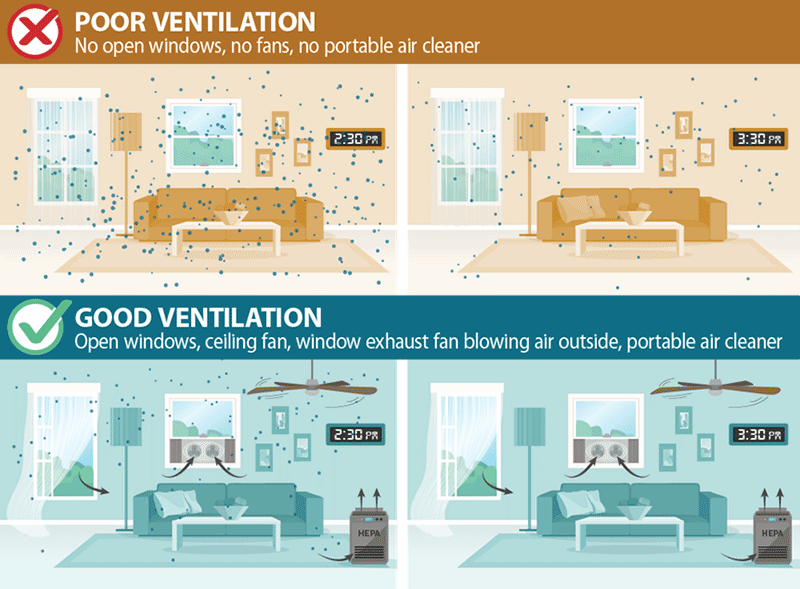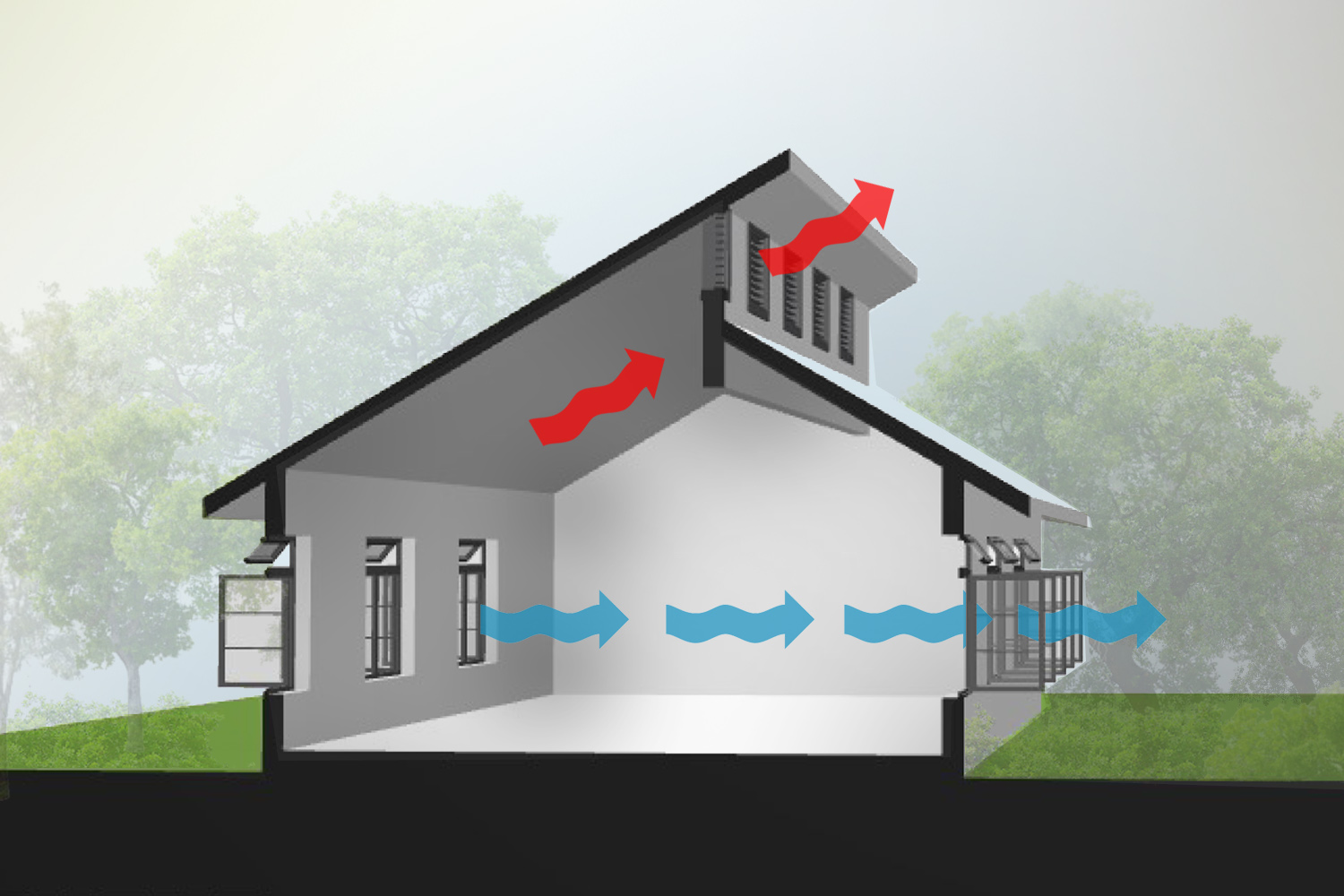The Science Behind Healthy Homes and Home Ventilation Melbourne
Wiki Article
Discovering Ingenious Solutions for Optimum Home Air Flow Solutions
Home air flow plays a crucial duty in keeping health and wellness and convenience within living rooms. With advancements in technology, ingenious solutions are emerging to maximize these systems. Smart air flow, energy recuperation ventilators, and progressed filtration are improving just how air top quality is managed - Home Ventilation Melbourne. The integration of these technologies elevates inquiries concerning their efficiency and versatility in diverse home settings. What effects do these growths hold for future living criteria?The Relevance of Home Air Flow for Health And Wellness and Comfort
Although often neglected, home ventilation plays a crucial role in keeping both health and comfort within property spaces. Ample ventilation is essential for the blood circulation of fresh air, which aids to dilute interior toxins such as volatile organic compounds, irritants, and odors. Without appropriate air movement, these pollutants can collect, bring about respiratory system issues and various other illness. On top of that, effective air flow adds to regulating moisture levels, stopping mold and mildew development and architectural damages. By ensuring a balanced exchange of air, residents can enjoy a more positive indoor atmosphere, improving general well-being. Sufficient air flow can enhance power effectiveness by decreasing the need for too much heating or air conditioning, ultimately resulting in reduced energy costs and an extra sustainable living room.Smart Ventilation Systems: Harnessing Technology for Efficiency
Smart ventilation systems stand for a substantial innovation in home air management, leveraging IoT integration for improved control. These systems not only advertise power efficiency but also supply remote monitoring abilities, enabling customers to enhance their interior settings perfectly. By taking advantage of modern technology, homeowners can accomplish enhanced air top quality while decreasing energy consumption.IoT Assimilation Benefits
How can IoT assimilation transform conventional air flow systems right into extremely reliable smart options? By incorporating Internet of Points (IoT) technology, air flow systems can attain real-time surveillance and control, enhancing their operational effectiveness. Sensing units positioned throughout a home gather information on air high quality, moisture, and temperature level, permitting automated modifications based upon current conditions. This immediate responsiveness causes enhanced interior air high quality and comfort levels. In addition, IoT-enabled systems can communicate with various other wise home tools, developing a cohesive environment that optimizes energy use. Customers can likewise accessibility and manage their air flow systems from another location using smart devices, supplying comfort and raised control. Overall, IoT integration represents a significant innovation, bringing knowledge and adaptability to traditional air flow methods.Energy Performance Includes
As energy effectiveness comes to be a vital emphasis in modern home design, advanced ventilation systems offer cutting-edge functions that considerably minimize power usage. These wise air flow systems utilize sensors to check interior air moisture, high quality, and temperature level degrees, instantly readjusting air flow to maintain suitable problems. By using power recuperation ventilators (ERVs), they capture and recycle energy from outbound air, decreasing home heating and cooling needs. Variable rate followers even more improve effectiveness by changing their procedure based upon real-time requirements, protecting against unnecessary energy waste - Home Ventilation Melbourne. Additionally, programmable timers and tenancy sensors ensure that air flow runs only when essential, adding to reduced energy bills. Jointly, these attributes stand for a substantial improvement in developing lasting and energy-efficient living atmospheresRemote Surveillance Abilities
What advantages do remote monitoring abilities offer modern-day home air flow systems? These capabilities enable property owners to track interior air top quality and system performance in genuine time, boosting total efficiency. By supplying information on moisture, air, and temperature level contaminants, smart air flow systems enable aggressive adjustments, making certain optimal problems. Furthermore, remote tracking helps with upkeep informs, determining prospective concerns before they intensify, consequently decreasing fixing prices and downtime. Customers can access system analytics through mobile applications, allowing for convenient control even when away from home. This technical assimilation not only advertises power efficiency yet also adds to a healthier living setting. Ultimately, remote monitoring capabilities stand for a substantial development in home ventilation, straightening with the growing demand for wise home modern technologies.Power Recuperation Ventilators: Optimizing Energy Financial Savings
Energy healing ventilators (ERVs) play a vital function in improving home power efficiency through efficient warmth exchange. By moving thermal power in between outgoing and incoming air, these systems considerably reduce general energy usage. This cutting-edge approach not just keeps interior air top quality however likewise adds to reduce utility costs.Efficiency of Warmth Exchange
While keeping interior air high quality is vital for health and wellness and convenience, the effectiveness of heat exchange in energy recovery ventilators (ERVs) plays a vital function in optimizing energy savings. The primary function of an ERV is to move heat and wetness in between inbound and outward bound jet stream, which maximizes indoor problems while lessening power loss. High-efficiency heat exchangers can significantly decrease the tons on heating and cooling down systems by reclaiming power that would or else be lost. The efficiency of these systems is commonly measured by their core temperature level currency exchange rate, which can differ based on design and materials used. By concentrating on advanced heat exchange innovations, property owners can improve their ventilation systems, causing improved energy efficiency and expense reductions gradually.Minimized Energy Usage
Lowering energy consumption is an essential benefit of power recuperation ventilators (ERVs), as they successfully recycle thermal energy from tired air. By transferring warmth between inbound and outbound jet stream, ERVs lessen the requirement for additional heating or cooling, resulting in considerable power savings. This procedure not just reduces energy costs but likewise minimizes the environmental effect related to greater energy use. On top of that, ERVs keep consistent indoor air quality without jeopardizing thermal convenience, creating a balanced living atmosphere. By incorporating ERVs right into home ventilation systems, house owners can achieve greater energy effectiveness, making it possible for a sustainable strategy to interior air administration while taking advantage of reduced energy bills. Ultimately, ERVs stand for an engaging remedy for energy-conscious consumers.Advanced Purification Technologies for Cleanser Indoor Air
As interior air top quality comes to be progressively identified as a crucial component of wellness and wellness, advanced filtering innovations are emerging as important tools for making certain cleaner environments. These innovations consist of high-efficiency particle air (HEPA) filters, turned on carbon filters, and electrostatic precipitators, each made to properly capture airborne toxins, allergens, and unpredictable natural substances (VOCs) HEPA filters can catch bits as tiny as 0.3 microns, significantly reducing irritants like allergen and family pet dander. Triggered carbon filters stand out in adsorbing smells and chemical vapors, contributing to a fresher indoor ambience. Additionally, electrostatic precipitators use electric charges to remove particles, offering an energy-efficient option. By integrating these sophisticated filtration systems, home owners can enhance interior air quality and promote healthier living spaces.The Function of Sensing Units in Optimizing Airflow and Quality
Exactly how can sensing units change the management of interior air high quality? Sensing units play a vital role in improving air movement and boosting indoor atmospheres. By continuously keeping track of elements such as moisture, temperature, and degrees of pollutants, they offer real-time information that notifies ventilation systems. This information enables computerized changes to air movement, making sure appropriate flow and reducing the buildup of impurities. Additionally, advanced sensing units can spot particular air quality problems, triggering prompt actions to boost convenience and health. The integration of these tools into air flow systems enables a much more reliable and receptive monitoring strategy, decreasing power usage while keeping ideal air top quality. Eventually, sensors offer as a vital component in creating much healthier indoor spaces with specific air flow regulation.Integrating Ventilation With Smart Home Systems
While several homeowners look for convenience and efficiency, incorporating ventilation systems with smart home technology provides an ingenious solution to taking care of interior air quality. By attaching air flow systems to wise home centers, residents can automate air top quality monitoring and control airflow based on real-time information. These systems can react to adjustments in contaminant, temperature, and moisture degrees, guaranteeing suitable interior conditions. Smart thermostats can function in tandem with air flow systems to improve power effectiveness, decreasing prices while maintaining convenience. Homeowners can also from another location regulate their ventilation setups through mobile applications, providing flexibility and comfort. Eventually, this integration not only simplifies administration but significantly enhances the total living environment, making it a beneficial enhancement to modern homes.Future Trends in Home Ventilation Solutions
Arising innovations and heightened recognition of interior air high quality are forming the future of home ventilation options. One substantial trend is the assimilation of expert system, making it possible for systems to change airflow based upon real-time data and tenancy patterns. On top of that, energy recuperation ventilators are acquiring traction, giving efficient air exchange while minimizing energy loss. Making use of green products and designs is likewise growing, aligning with sustainability objectives. Smart sensors that monitor pollutants and moisture levels are ending up being criterion, permitting property owners to keep excellent interior environments. Scalable and modular systems are emerging, giving customizable choices for numerous home sizes and arrangements. Home Ventilation Melbourne Together, these improvements assure to improve convenience, efficiency, and health and wellness in household roomsRegularly Asked Questions
Just how Usually Should I Clean My Home Ventilation System?

The regularity of cleansing a home air flow system differs based on usage and environment. Generally, it is recommended to cleanse the system every three to six months to preserve suitable air high quality and system effectiveness.
Can Poor Air Flow Cause Mold Development Inside Your Home?

What Are the Indicators of Inadequate Home Ventilation?
Indications of insufficient home air flow include relentless odors, increased moisture levels, condensation on home windows, visible mold development, and a general feeling of stodginess. These indicators often suggest that air flow is not enough for preserving a healthy indoor setting.How Can I Improve Air Flow in Older Houses?
To improve air flow in older homes, one might take into consideration mounting exhaust followers, using natural air flow with windows, securing spaces for better air control, and integrating air cleansers to boost interior air high quality effectively.Are DIY Ventilation Solutions Effective and Safe?

Smart air flow, power healing ventilators, and progressed purification are reshaping how air quality is taken care of. As power performance becomes an important focus in modern-day home style, advanced ventilation systems supply ingenious attributes that greatly minimize power consumption. By integrating ERVs into home ventilation systems, home owners can attain greater energy performance, allowing a sustainable strategy to indoor air administration while benefiting from lower power costs. The integration of these devices right into air flow systems enables for a much more responsive and efficient administration method, minimizing energy intake while keeping ideal air quality. While lots of property owners look for benefit and efficiency, integrating air flow systems with wise home innovation provides an ingenious option to managing interior air quality.
Report this wiki page